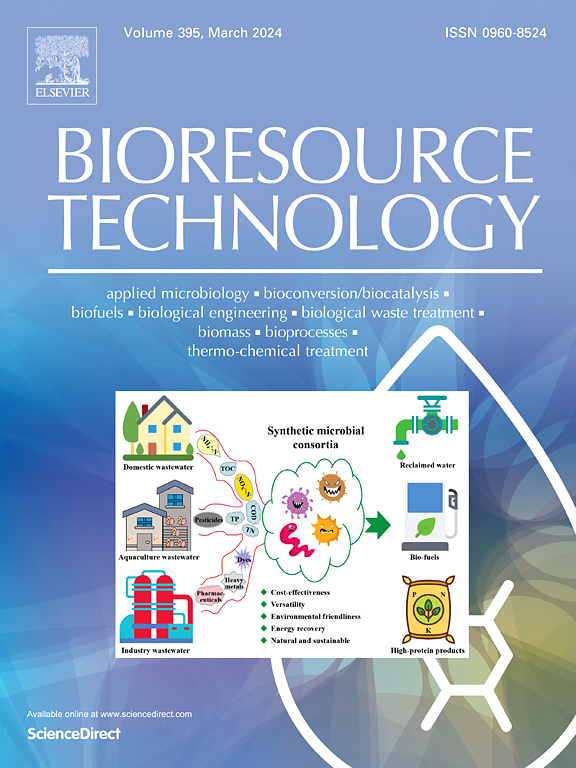利用人工神经网络模拟高产生物柴油藻类对咖啡因的降解。
IF 9.7
1区 环境科学与生态学
Q1 AGRICULTURAL ENGINEERING
引用次数: 0
摘要
本研究利用pannonicus Desmodesmus IITISM-DIX2在咖啡因降解方面优于sorokiniana小球藻IITISM-DIX3,建立了人工神经网络(ANN)模型,用于预测不同pH、光周期、咖啡因和吲哚乙酸(IAA)浓度下的咖啡因去除效率。采用4-15-1多层感知器设计的人工神经网络模型在120个数据点上进行训练,获得了较高的预测精度(R2 > 0.96),偏差/精度因子在0.95-1.11之间。敏感性分析发现pH是最关键的因素。在含咖啡因的模拟废水中,IAA使桥连菌的脂质含量提高了91 %。在最佳产脂条件(10 ppm咖啡因,5 ppm IAA)下进行FAME分析。IAA上调了桥连菌和小球藻的关键代谢途径,增加了次级代谢产物。综上所述,建模结果是提高系统性能、指导参数选择以增强桥模蝇对咖啡因去除的关键。IAA还提高了韧性和脂质产量,增加了咖啡因去除和生物燃料生产的经济可行性。本文章由计算机程序翻译,如有差异,请以英文原文为准。

Harnessing artificial neural networks to model caffeine degradation by High-Yield biodiesel algae Desmodesmus pannonicus
In this study, Desmodesmus pannonicus IITISM-DIX2, outperforming Chlorella sorokiniana IITISM-DIX3 in caffeine degradation, was used to develop an artificial neural network (ANN) model for predicting caffeine removal efficiency under varying pH, photoperiods, caffeine, and indole acetic acid (IAA) concentrations. The ANN model, designed with a 4–15-1 multilayer perceptron and trained on 120 data points, achieved high predictive accuracy (R2 > 0.96) and bias/accuracy factors between 0.95–1.11. Sensitivity analysis identified pH as the most critical factor. IAA enhanced lipid content in Desmodesmus by 91 % in caffeine-containing simulated wastewater. FAME analysis was performed under optimal lipid-producing conditions (10 ppm caffeine, 5 ppm IAA). IAA upregulated key metabolic pathways, increasing secondary metabolites in Desmodesmus and Chlorella. In summary, the modeling results are key for improving system performance, guiding parameter selection to enhance caffeine removal by Desmodesmus. IAA also enhanced resilience and lipid yield, increasing the economic feasibility of caffeine removal and biofuel production.
求助全文
通过发布文献求助,成功后即可免费获取论文全文。
去求助
来源期刊

Bioresource Technology
工程技术-能源与燃料
CiteScore
20.80
自引率
19.30%
发文量
2013
审稿时长
12 days
期刊介绍:
Bioresource Technology publishes original articles, review articles, case studies, and short communications covering the fundamentals, applications, and management of bioresource technology. The journal seeks to advance and disseminate knowledge across various areas related to biomass, biological waste treatment, bioenergy, biotransformations, bioresource systems analysis, and associated conversion or production technologies.
Topics include:
• Biofuels: liquid and gaseous biofuels production, modeling and economics
• Bioprocesses and bioproducts: biocatalysis and fermentations
• Biomass and feedstocks utilization: bioconversion of agro-industrial residues
• Environmental protection: biological waste treatment
• Thermochemical conversion of biomass: combustion, pyrolysis, gasification, catalysis.
 求助内容:
求助内容: 应助结果提醒方式:
应助结果提醒方式:


